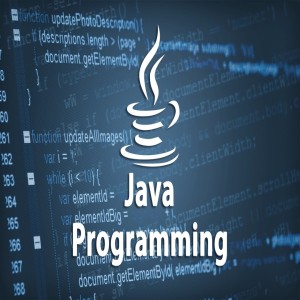Java Programming
What you are going to learn
Course description
Course Overview/Objective
- Use Java technology data types and expressions, flow control constructors, arrays and other data collections
- Create compile and execute Java technology applications that leverage the object-oriented features of the Java language.
- Implement error-handling techniques using exception handling
- Implement input/output (I/O) functionality to read from and write to data and text files, Create multithreaded programs
- Create a simple Transmission Control Protocol/Internet Protocol (TCP/IP) networked client that communicates with a server through sockets, Create JDBC programs.
- After Completing this course, Participants can works on J2EE and Mobile Application development
Requirements
Science Graduate
Course Project
No
Used Tools
Netbean’s IDE, JDK, eclipse etc
Course Outline
Object-oriented Programming
- Define modeling concepts: abstraction, encapsulation, and packages
- Discuss Java technology application code reuse
- Define class, member, attribute, method, constructor, and package
- Use the access modifiers private and public as appropriate for the guidelines of encapsulation
- Invoke a method on a particular object
- Use the Java technology API online documentation
Identifiers, Keywords, and Types
- Use comments in a source program
- Distinguish between valid and invalid identifiers
- Use the eight primitive types
- Define literal values for numeric and textual types
- Define the terms primitive variable and reference variable
- Declare variables of class type
- Construct an object using new and describe default initialization
- Describe the significance of a reference variable
- flow control structures in a program
Arrays
- Declare and create arrays of primitive, class, or array types
- Explain why elements of an array are initialized
- Explain how to initialize the elements of an array
- Determine the number of elements in an array
- Create a multidimensional array
- Write code to copy array values from one array to another
Class Design
- Define inheritance, polymorphism, overloading, overriding, and virtual method invocation
- Use the access modifiers protected and the default (package?friendly)
- Describe the concepts of constructor and method overloading
- Describe the complete object construction and initialization operation
Advanced Class Features
- Create static variables, methods, and initializers
- Create final classes, methods, and variables
- Create and use enumerated types
- Use the static import statement
- Create abstract classes and methods
- Create and use an interface
Exceptions and Assertions
- Define exceptions
- Use try, catch, and finally statements
- Describe exception categories
- Identify common exceptions
- Develop programs to handle your own exceptions
- Use assertions
- Distinguish appropriate and inappropriate uses of assertions
- Enable assertions at runtime
Collections and Generics Framework
- Describe the general purpose implementations of the core interfaces in the Collections framework
- Examine the Map interface and
- Examine the legacy collection classes
- Create natural and custom ordering by implementing the Comparable and Comparator interfaces
- Use generic collections and type parameters in generic classes
- Refactor existing non?generic code
- Write a program to iterate over a collection
- Examine the enhanced for loop
I/O Fundamentals
- Write a program that uses command?line arguments and system properties
- Examine the Properties class
- Construct node and processing streams, and use them appropriately
Design Patterns
- Serialize and desterilized objects
- Distinguish readers and writers from streams, and select appropriately between them
Console I/ O and File I/O
- Read data from the console
- Write data to the console
- Describe files and file I/O
Building Java GUIs Using the Swing API
- Describe the JFC Swing technology
- Identify the Swing packages
- Describe the GUI building blocks: containers, components, and layout managers
- Examine top? Level, general? Purpose and special? purpose properties of container
- Examine components
- Examine layout managers
- Describe the Swing single? threaded model
- Build a GUI using Swing components
Handling GUI Generated Events
- Define events and event handling
- Examine the Java SE event model
- Describe GUI behavior
- Determine the user action that originated an event
- Develop event listeners
- Describe concurrency in Swing? based GUIs and describe the features of the Swing Worker class
GUI Based Applications
- Describe how to construct a menu bar, menu, and menu items in Java GUI


